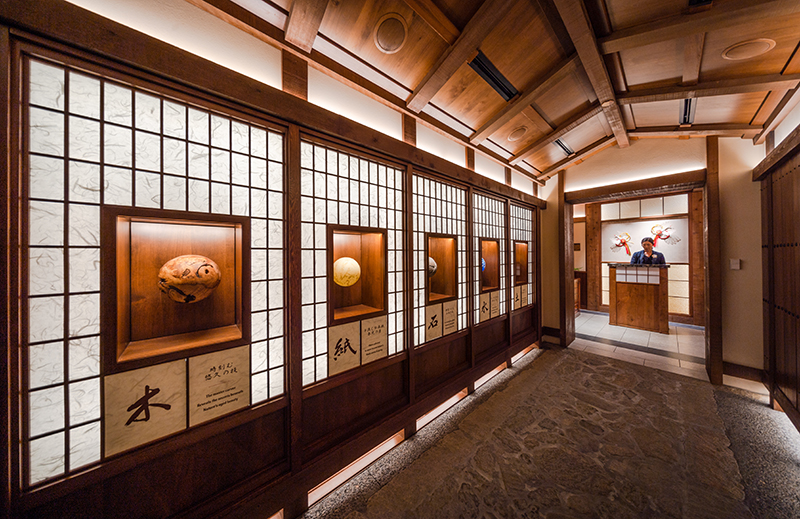
Takumi-Tei’s Omakase Tasting Menu is a Walt Disney World bucket list-worthy experience. The Japan pavilion’s Signature Restaurant is unquestionably expensive, but is it worth the money? This dining review shares food photos & thoughts on our experience at this Epcot fine dining restaurant. (Updated August 1, 2024.)
Let’s start with the latest update, which is that Takumi-Tei has gotten another new menu. Aside from changes to the course, both options are now both priced at $250 per adult, plus tax and gratuity. Previously, the plant-based Omakase menu was $150. When we last dined at Takumi-Tei, the cost of the regular Omakase menu (not the plant-based one) was $150–so this is a $100 price increase. Additionally, they’ve eliminated the a la carte menu.
This made since when Takumi-Tei first reopened, pent-up demand was running hot, and guests were spending freely. That hasn’t been the case for a while, though, and the restaurant regularly has availability in the last year. When this menu change was first announced, my expectation was that it’d be restoring the a la carte menu in an effort to boost bookings. This is essentially the opposite of that.
To each their own, but we have no desire to revisit Takumi-Tei with the only menu option costing $250 per person. This isn’t to single out Takumi-Tei, as the same goes for Monsieur Paul. It’s a bit surprising to us that these restaurants are viable at these price points, as we had been to Monsieur Paul on many occasions when they couldn’t fill half the restaurant even with ‘summer special’ menus at a fraction of the current price point.
Perhaps that’s part of the thinking. That it’s better to fill 10 tables with a menu costing $250 per person than it is to fill 20 tables at $100 per head. I don’t know whether that’s the rationale, but I don’t know what else it could be. That’s obviously their prerogative, but we aren’t the target audience for such an experience and it’s hard for us to see the value proposition of it.
Presumably, anyone with the budget to drop $250+ per person on a meal also has the means to travel internationally, where meals of this caliber are a fraction of the price (especially thanks to the strong dollar). We just did a meal of this caliber in Kyoto for approximately $50 per person. Even without traveling abroad, guests do have the ability to venture off-site or to major cities in the United States, where such meals also exist.
Again, to each their own. But we have a hard time justifying a meal this expensive at Walt Disney World unless it’s Victoria & Alberts. Maybe you really want a premium, authentic Japanese dining experience inside EPCOT, in which case, Takumi-Tei (and the rest of this review) is for you!
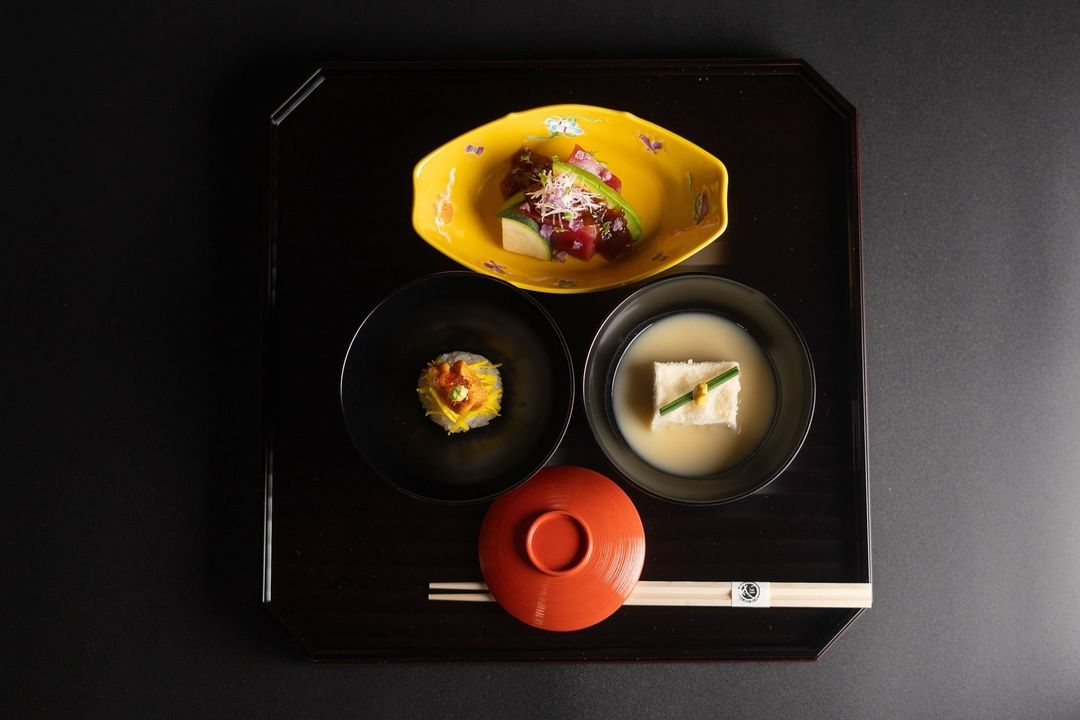
Takumi-Tei’s Omakase menu is a multi-course dining experience featuring sushi, wagyu steak, dessert, a tea ceremony, and more. This is not the Chef’s Table or kaiseki meal, which are served separately in the private Water Room. Rather, the Omakase Tasting Menu can be ordered from any table at Takumi-Tei.
Due to the high price tag for this meal (it’s even more expensive with wine & sake pairings, which we did not do), we opted to split the Omakase experience while also ordering from the regular menu (not currently available). This appears to be pretty common, and we’d definitely recommend the same if you don’t want to break the bank.
This Omakase Tasting Menu review won’t fixate on theme, atmosphere, or service; if you’re concerned with those things (and you should be!), be sure to read the first half of our Takumi-Tei Restaurant Review before continuing here…
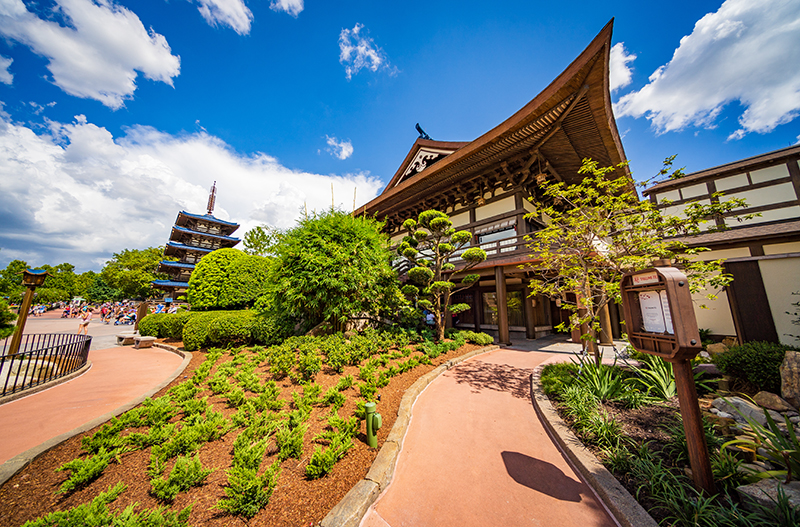
We will compare and contrast our experience with the Omakase Tasting Menu at Takumi-Tei to some of our dining experiences in Kyoto and beyond, but our aim is not to be pretentious about it. Rather, we share some of this because Takumi-Tei is perhaps the closest Epcot has to an educational dining experience. (Is edutastement a word? If not, it should be.)
Beyond that, all of Epcot’s restaurants are reinterpreted for a broad theme park audience. We don’t want to be nit-picky commentators who decry the inauthenticity of this or that. Even traditional Japanese restaurants that have been operating for centuries (literally) are constantly reinventing themselves and chasing trends. Many Japanese chefs at high-profile restaurants train in Europe, and French cuisine (among other styles of cooking) is hugely influential in Japan.
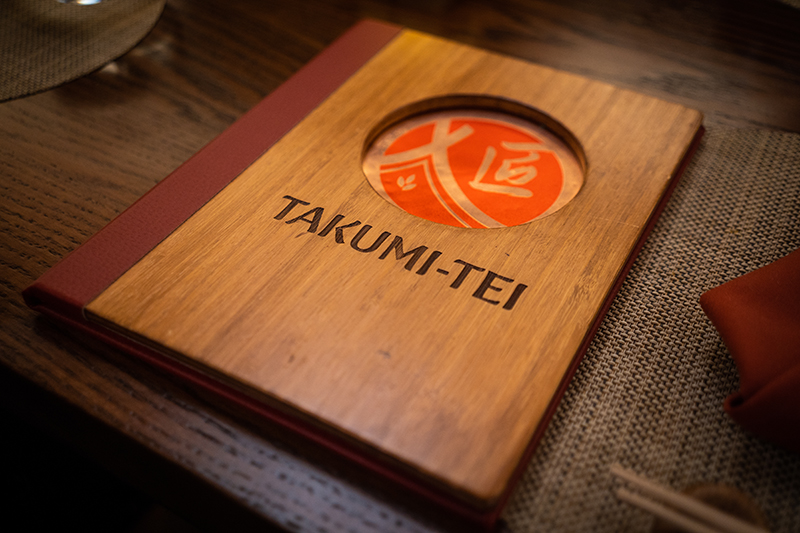
With that in mind, the first thing we’ll point out is that, as great as it is (and it’s great!), the Omakase Tasting Menu at Takumi-Tei isn’t an omakase experience. In Japan, omakase means that what’s served is left up to the discretion of the chef.
Typically, this means counter seating and the chef preparing items based upon fresh ingredients and what the restaurant happens to get on a particular night. In Kyoto, seasonality is huge. Many restaurants serve omakase menus comprised of seasonal vegetables and fish obtained from the wholesalers around Nishiki Market.
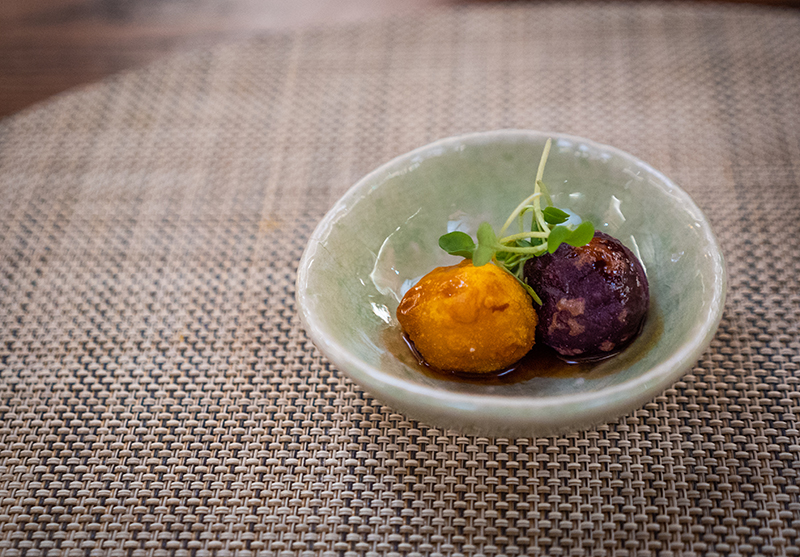
At Takumi-Tei, the Omakase Tasting Menu is printed in the menus and posted online, and remains largely unchanged for months at a time. Takumi-Tei does have a chef’s table (the Water Room), which sounds like it’s a cross between an actual omakase experience and kaiseki-ryori.
The one thing that does seem to change daily on the Omakase Tasting Menu is the otoshi course, which is “imagined daily by the Chefs at Takumi-Tei.” On each of our two visits, we were served something different.
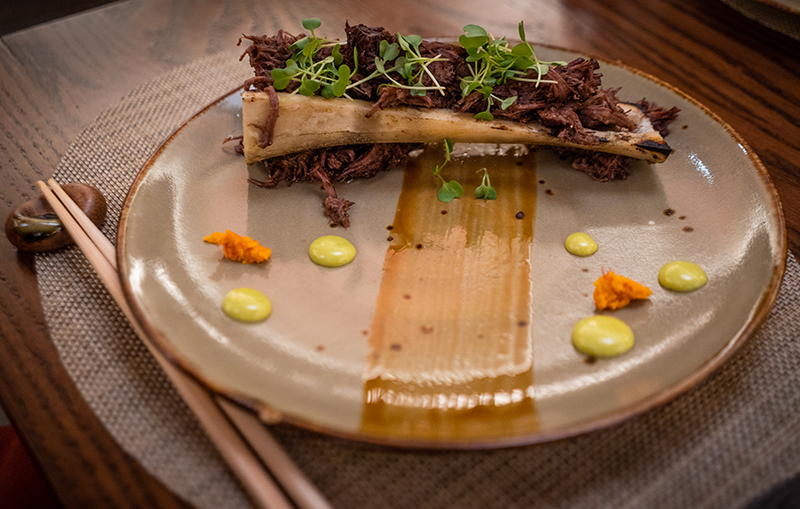
In our full Takumi-Tei review, we already covered the Nikomi Wagyu: Roasted Bone Marrow, Braised Wagyu Short Rib, Yuzu Kosho, Wasabi Shiso Bavaroise, Warishita.
Suffice to say, this is one of the best appetizers we’ve ever had at Walt Disney World. It seems a tad incongruous with the rest of the tasting menu, but it’s so phenomenal that we’ll absolutely overlook this.
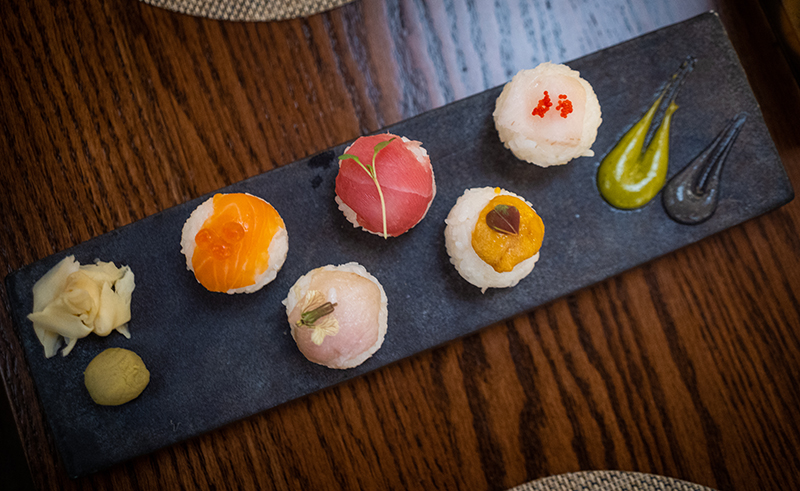
Next was the Temari Sushi: Chef-selected Assortment of Oceanic Delicacies.
This has become somewhat trendy in the Gion district of Kyoto, and is spun as being served in round, bite-size portions so geisha don’t mess up their makeup and lipstick, and also because they couldn’t open their mouths widely. There are no geisha at Takumi-Tei, so it seems like a pretext for using smaller portions of fish.
It would’ve been one thing if the fish wrapped around the rice, but most didn’t even cover the top. That made the Temari Sushi course a disappointment. (Besides, everyone knows that the favorite food of geisha is…egg salad sandwiches?!)
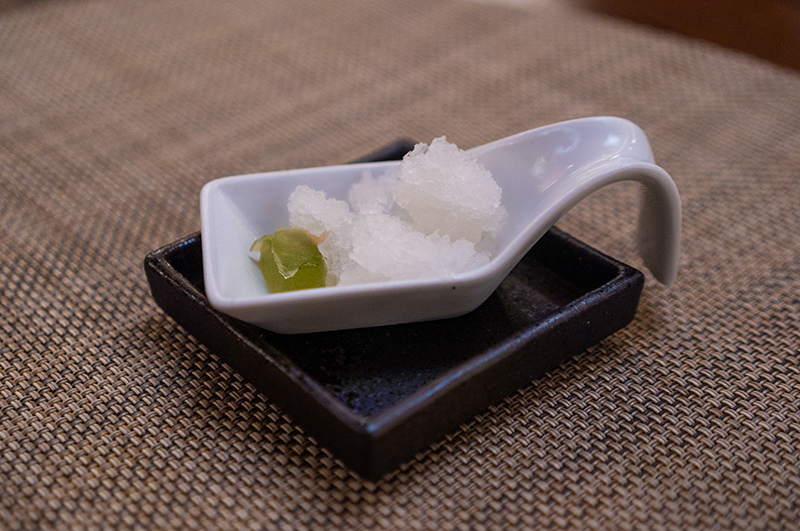
Following that comes the Hashiyasume: palate cleansing course.
This consists of cucumber jelly and ginger, two things we love. The flavor is crisp, clean, and refreshing. Does the trick and gives your taste buds the clean slate necessary to enjoy the delights that await!
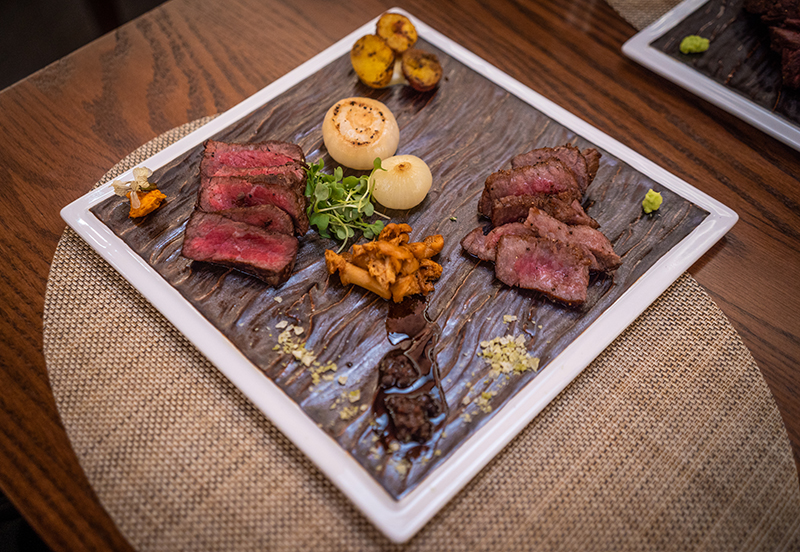
And oh what a delight is to come with the Wagyu Tabekurabe: Japanese A5 Wagyu Strip Steak paired with Jackman Farms Wagyu Strip Steak, Roast Cipollini Onion, Curried Potato, Seasonal Mushroom, Daikon and Watermelon Radish Tsukemono, Yuzu Kosho, Fresh-grated Wasabi, Arima Sansho Pepper Reduction, Matcha Maldon.
Tabekurabe is a culinary comparison, and not an uncommon one when ordering wagyu in Japan. Here, I think it’s a chance to dunk on America and say, “see how your fake wagyu stacks up to the real thing?!” There truly is no comparison, as the A5 wagyu is buttery both in flavor and tenderness. Words don’t even begin to do it justice, and the Omakase Tasting Menu is a great introduction to the Wonderful World of Wagyu.
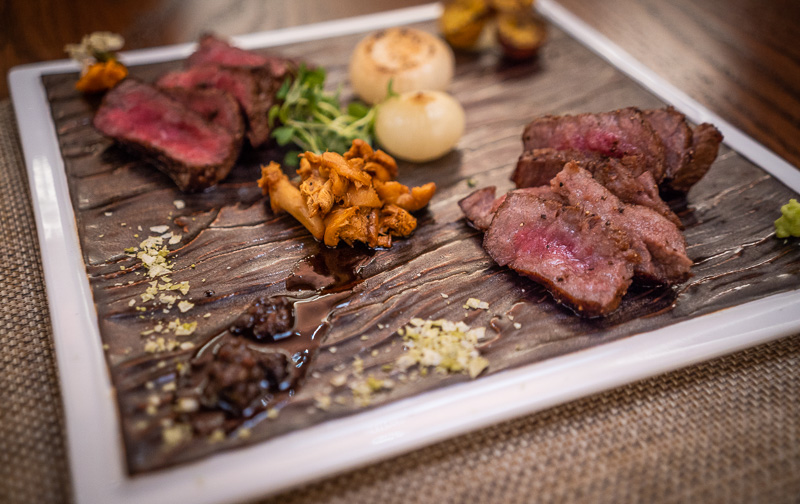
It’s worth noting here that a comparable amount of wagyu on the normal menu is going to run you about $100 (averaging the cost of the American and Japanese beef). I think the strip steak is the perfect cut for Japanese A5 Wagyu–making this a better option than ordering the Makiba no Megumi — Gift of Ranch and Ushikai no Shukaku — Cattleman’s Harvest, and splitting those between two people.
Instead, we’d recommend splitting this Omakase Tasting Menu between two people, and also adding the Sea Bass, possibly the Agedashi Tofu (if you want another distinctly Japanese dish), and one of the other two desserts. That would help provide balance to this meal, which is arguably a tad beef-heavy. (HERESY!)
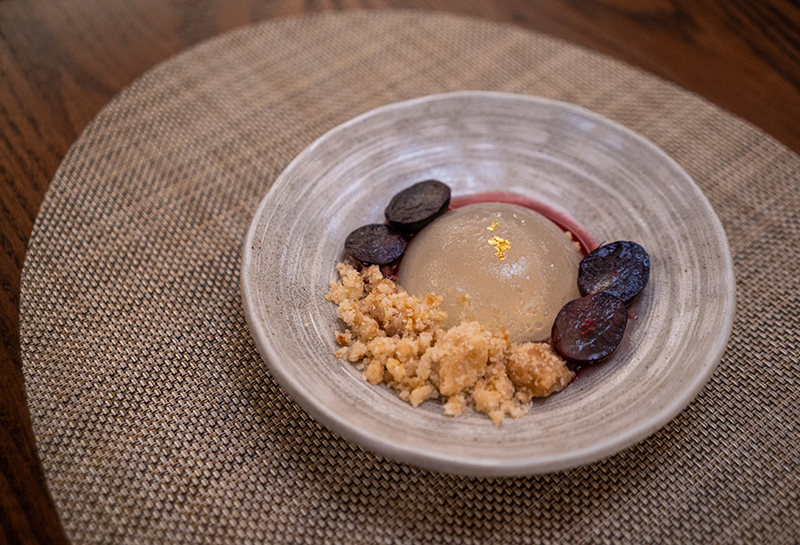
For dessert, we have the Shizuku: Water Cake, Yuzu Crumble, Black Grape, Blackberry Sake.
This is a trendy dessert in Japan (where it’s primarily known as “raindrop cake”), but mostly for the sake of Instagram. Your mileage may vary, but I find this disappointing as compared to traditional mochi covered with kinako. As is, this looks pretty, but is rather bland. The crumble doesn’t do nearly as good of a job of adding flavor to the water cake as kinako powder would. The other two desserts on the normal menu are far superior to the Shizuku.
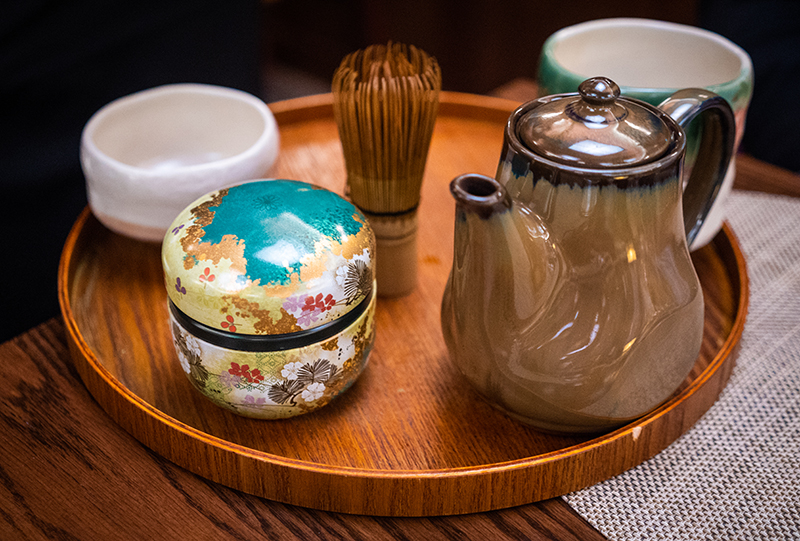
Finally, the Omakase experience ends with a Tea Ceremony. This is a traditional ceremony featuring matcha green tea prepared in front of the guest.
We’ve done a couple of tea ceremonies in Kyoto and they are…not my cup of tea. In my estimation, this is the perfect example of a cultural experience adapted for American audiences. It condenses and skips most of the tedious steps, distilling it to the important and interesting elements. The end result is something on par with what you’d encounter at Ippodo, an excellent tea house in Kyoto that’s over 300 years old.
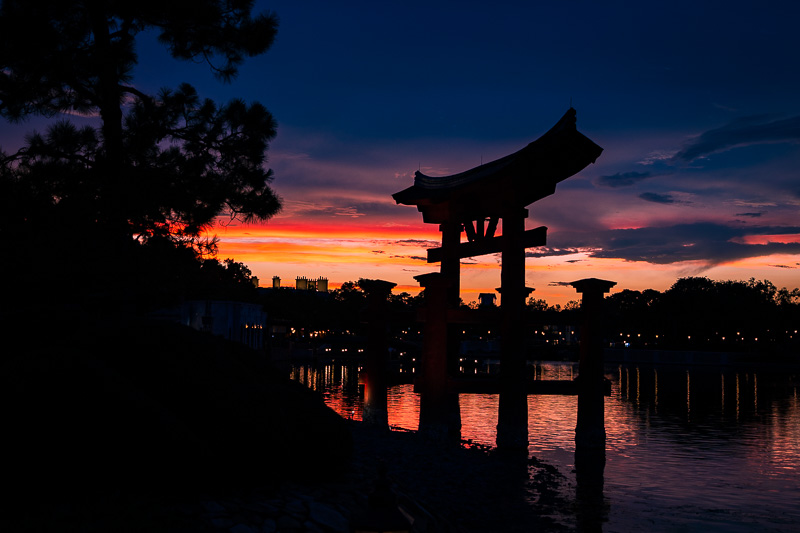
So many things we all do at Walt Disney World happen at a frenetic pace, and we often don’t relish each individual moment or experience. However, this night remains etched in our minds because we did savor it and did not take it for granted. It was a multi-hour meal with friends, ending as Epcot Forever started.
Afterwards, we bought a Bonsai tree at Mitsukoshi Department Store to remember the night (which Yossarian now “loves”), watched the fireworks, and then let our meals settle with a long lap of World Showcase before wandering out of International Gateway.
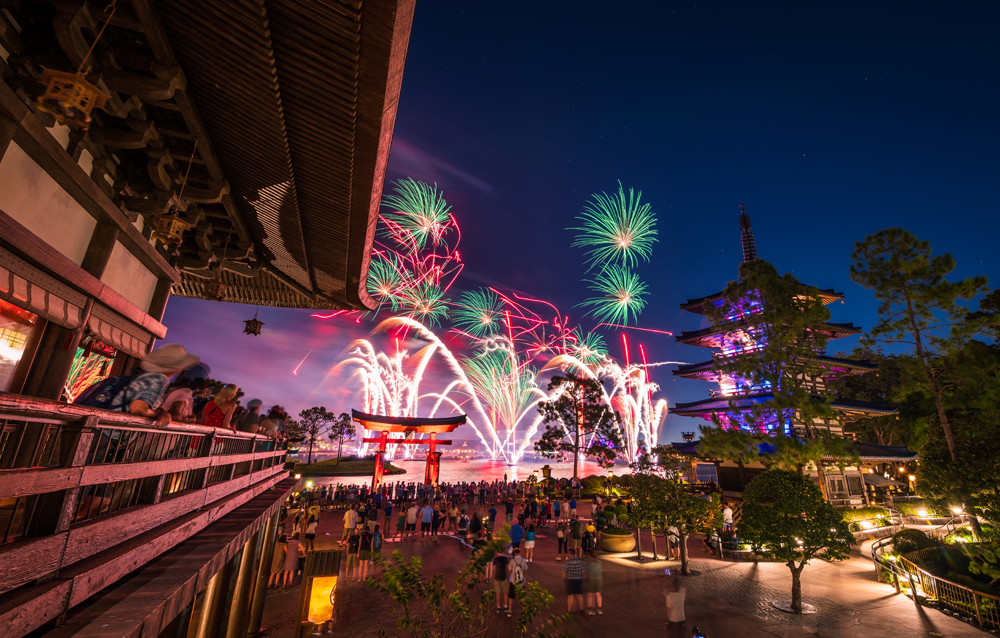
Overall, the Omakase Tasting Menu ends up being a great edutastement experience in Epcot. It’s a lengthy meal (plan on spending 2+ hours at Takumi-Tei) providing ample opportunities to learn about Japanese culture, various regions in the country, and the Cast Members who double as ambassadors. As with any meal at Takumi-Tei, this tasting menu offers the height of omotenashi hospitality, with service that’s unrivaled anywhere else at Walt Disney World.
In terms of cuisine, the Omakase Tasting Menu balances trendy and eye-catching dishes with traditional ones. While slight liberties are taken, these are pretty reflective of what you’d actually find at restaurants in Japan. Even the dishes that aren’t delicious (like the raindrop cake) are fascinating and beautiful, which is half the fun.
There are three courses that are unequivocally exceptional: the Nikomi Wagyu, Wagyu Tabekurabe, and Tea Ceremony. The cumulative cost of these dishes would be over $150 (if they were available on the regular menu–and 2 of the 3 are not), making the other four courses essentially “bonuses.” When viewed in that light, the Omakase Tasting Menu is an exceptional pick for anyone wanting to splurge and wander into the Wonderful World of Wagyu.
If it’s in your budget, the Omakase Tasting Menu offers a truly magical Walt Disney World memory that will last a lifetime–one that you can savor while you’re stuck at home long after your trip has ended. I don’t know when we’ll be able to get back to Takumi Tei, but I’m already looking forward to our next visit.
Planning a Walt Disney World trip? Learn about hotels on our Walt Disney World Hotels Reviews page. For where to eat, read our Walt Disney World Restaurant Reviews. To save money on tickets or determine which type to buy, read our Tips for Saving Money on Walt Disney World Tickets post. Our What to Pack for Disney Trips post takes a unique look at clever items to take. For what to do and when to do it, our Walt Disney World Ride Guides will help. For comprehensive advice, the best place to start is our Walt Disney World Trip Planning Guide for everything you need to know!
Your Thoughts
If you’ve done the Omakase Tasting Menu, what did you think of the experience and meal? Did you feel it was worth the money or not? Is this something you’d like to do, or is it too pricey? Do you agree or disagree with our review? Any questions we can help you answer? Hearing your feedback–even when you disagree with us–is both interesting to us and helpful to other readers, so please share your thoughts below in the comments!





